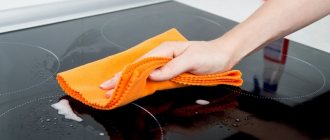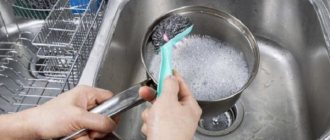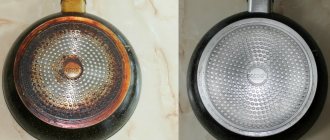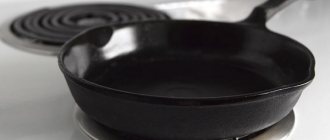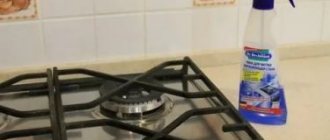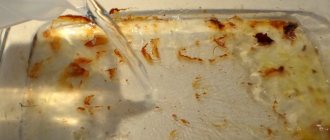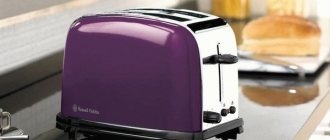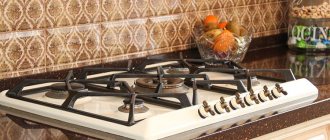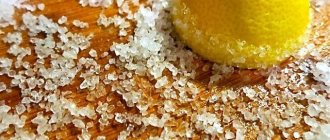You can wash dishes from old grease without damaging objects or expensive products.
It is not always possible to wash off fat that is, let’s say, not the first freshness, using conventional means. Hard washcloths and even knives are used, with which housewives try to remove the layer of fat from the walls of the dishes. Needless to say, this does not make the utensils any younger. Scratches and gouges remain just after such harsh measures. But you also don’t need to run to the store for an expensive but generously advertised powder or gel. It makes more sense to use simple and harmless methods first.
How to wash off fat with soda and citric acid
A very simple method, and it is not dangerous for the respiratory tract of the person who uses it (which cannot be said about store-bought products).
The recipe is as follows: soda and citric acid are mixed in equal proportions. The wet surface of the dishes is sprinkled with this mixture. Fat reacts with soda, acid and water. After some time, lumps will appear on the surface, which need to be removed.
You don’t even have to rub anything, the reagents will do everything for you.
Old fat and carbon deposits can be easily cleaned with soda and citric acid
Types of devices and features of washing them if they are burnt
Hobs are available in different modifications depending on the heat source, operating principle and base material . The most popular are gas, enameled, stainless, glass-ceramic and induction devices.
Each of them requires a specific approach to cleaning - the products must not only remove carbon deposits without a trace, but also not harm the coating.
Enameled
To add aesthetics, units of this type are coated with enamel in different shades - white, brown, black, beige. This is the most common type of hob, the most durable and relatively easy to maintain .
The main condition for cleaning enamel coatings is the use of gel and liquid detergents.
It is not recommended to use abrasive substances - grains will leave scratches, spoil the appearance and cause rapid contamination in the future.
It does not tolerate enamel or acid-containing compounds that literally corrode the coating. It cannot be rubbed with hard brushes, but you can safely use the back of the hard side of a dishwashing sponge. For the liquid product to be effective, it is left on the surface for at least 30 minutes (depending on the composition) .
Baking soda is the only abrasive approved for cleaning enamel and metal coatings; it is gentle and gentle.
Made of stainless steel
Stainless steel material in the kitchen always looks expensive and noble.
Stainless steel stoves are just as easy to clean from soot and dirt as enameled stoves, but they have one significant drawback: tiny splashes, drops of grease and stains are visible on their surface.
Therefore, stainless steel devices require frequent maintenance - old stains will be difficult to clean off.
For cleaning, it is recommended to use soft sponges, cloth napkins, microfiber cloths or rags to remove moistened stains and soot. You will also have to give up abrasives and hard brushes - only gel-like or cream-like household chemicals are suitable.
To clean, you can use a slice of lemon - wipe the stains with it, and then clean it with a dry cloth.
Stainless steel plates must be wiped dry after washing, otherwise stains will remain. Glass cleaning spray will help make your stove shine.
Induction and glass ceramic
This type of kitchen appliance is prone to rapid contamination - not only drops and splashes are visible on smooth ceramics, but also fingerprints. Maintenance of modern stoves must be regular. For daily cleaning, a glass cleaning spray is suitable - just spray the coating and wipe with a soft cloth.
It is advisable to allocate a separate cloth for cleaning glass ceramics, rather than using the same one you use to treat mirrors or glass.
Contaminants must be removed as soon as you notice them, but only after the heating element has completely cooled. You can clean dirt with regular dishwashing gel - foam it on a washcloth, wipe off the stains, and then wipe dry.
If the carbon deposits do not budge the first time, apply the gel directly to the surface, leave for 30-40 minutes, rub with a sponge, rinse with water and polish with a kitchen towel until shiny.
To clean glass-ceramic and induction hobs, it is advisable to purchase special scrapers complete with removable metal blades - they delicately remove plaque and dirt.
Cleaning products should have a paste-like texture without coarse particles or abrasives that can scratch the coating. Glass cleaning spray, regular dish soap, steel cleaner, baking soda, and lemon juice can all be used to clean ceramics.
Experienced housewives recommend rubbing the hob with any vegetable oil. It will create a protective film, and dirt will be removed much easier and faster.
Gas
A gas stove is considered the most difficult to clean , because in addition to the metal or enamel hob, the burners, grate and control knobs, which quickly become clogged with grease, must be cleaned. Many models also come with a rear guard and a glass or metal cover.
To clean the grill, you can use a variety of brushes, scrapers and abrasives - metal is not afraid of them. After mechanical cleaning, apply a paste made from baking soda and water to the rods and leave it for at least an hour.
During this time, the carbon deposits will soften and final cleaning can be carried out.
The burners and handles are soaked in soapy water; the burners can simply be wiped with a damp cloth. If the handles are not removable, they are treated with a solution of water and vinegar or water . It is convenient to work in hard-to-reach places with an old toothbrush.
The method of cleaning the working area of a gas stove is chosen in accordance with the base material - metal or enamel.
Dish gel, soap solution, baking soda and soda ash, and lemon juice are suitable.
Old grease from cast iron pans - how to deal with it
Modern housewives are in a hurry to throw away grandmother’s frying pans, as they are commonly called, and cast iron pots, since the appearance of the utensils does not inspire optimism. Indeed, a very old layer of soot and fatty deposits seems impossible to clean.
But there is a way, and for this you will need:
- a jar of PVA glue,
- 1 laundry soap,
- a basin in which the frying pan will fit.
The greater the layer of fat and soot on the frying pan, the longer it needs to be boiled
It is better to grate laundry soap: this will make it more convenient to use its properties. Pour water into a basin and bring it to a boil; when the water boils, glue and soap shavings are poured into it. In this case, the fire must be reduced. All this needs to be mixed, because the soap must dissolve. And the frying pan is lowered into this solution. You need to cook it for two hours, no less, adding water from time to time.
The bottom line is that the solution makes fatty deposits very soft and amenable to cleaning. They may begin to crumble already during the cooking process, but you can finally clean the dishes with a metal sponge. The pan will sparkle, and the old fat layer will simply have no chance.
Professional products - TOP best
Folk remedies are used due to their natural properties. Their action is limited. They can't always clean a dirty oven. When the surface has accumulated grease and dirt over the years, they resort to cleaning products designed for such stains. They can clean an old oven, protect the surface from subsequent burning deposits, and are easily washed off.
Most stove and oven cleaners are designed to be odorless so that the food does not “smell of chemicals.” Their remains disintegrate within a few hours. The threat of poisoning is reduced to a minimum. When traditional methods fail to clean the oven, you can remove dirt with household chemicals. Among the brands of detergents for stoves and ovens, 5 compositions can be distinguished.
Amway
The composition produced in Belgium is considered the best in its line. This is a gel-like product for professional cleaning of household appliances from grease and dirt. Due to its thickness, the cleaning agent is consumed slowly. Covers areas of contamination with an even, dense layer. This ensures uniform activity on all internal surfaces, side and top.
It is recommended to wear gloves when working with Amway. The caustic cleaning composition irritates thin skin and microcracks on the fingers. May weaken nail structure.
How to clean the oven with active gel:
- The composition is applied to areas of contamination.
- Leave for half an hour.
- Serious, old grease stains are left for treatment for an hour.
- The inner surface of the oven is thoroughly washed with water to completely remove any remaining product.
The chemical composition completely removes dirt. But it has a persistent and pungent odor. After cleaning the oven, the kitchen is well ventilated.
Reinex
This is a spray designed for cleaning ovens. Available in spray form. The substance cleanses light or fresh stains. But it doesn’t break down old fat well. The smell is neutral. The spray is easily washed off without leaving chemical traces. Possible residues of the product are quickly destroyed at high temperatures. Therefore, the composition is considered safe. Manufacturer – Germany.
SanitaR
An oven and stove cleaner that can remove deposits from baking sheets and racks. Looks like a thick gel. Due to this, it is easy to apply to surfaces. Quickly eliminates fatty deposits and old fumes. Gel:
- apply with a sponge in the area of contamination;
- leave for 20-30 minutes;
- wash off the composition with warm tap water, wiping off any remaining fat along with it.
The product is suitable for cleaning tiles and plastic kitchen furniture. Easily washed off. Does not leave chemical traces. The smell is sour, neutral. There is no need to ventilate after cleaning.
Faberlic
This is a cleaning gel designed to remove greasy stains, plaque, dirt, and dried-on food debris. The composition is classified as biodegradable. Cooking food in the oven after cleaning will not carry the risk of poisoning. It can be used on baking sheets and cooking grates.
How to properly clean the oven with gel:
- Apply an even layer of the product to areas of grease stains and dirt.
- Leave the gel for up to half an hour to activate.
- Wash off the composition with the remaining dissolved fat with water.
Faberlic is used for processing microwave ovens. The remainder of the composition disintegrates into safe elements within a day. The cleaning composition removes large contaminants and thickened drops of fat.
Frosch
Removes grease deposits on stovetops and oven interior surfaces. The composition is made on the basis of soda. Purification occurs mainly through the “saponification” of contaminants. The liquid does not cause skin irritation. Remains of the product are easily washed off with water and are not toxic. The principle of operation coincides in all respects with the “soda” folk method.
The solution is released in the form of a spray. It is convenient to apply to contaminated areas. Effectively removes dirt and food debris. Does not leave a permanent mark on the glass. The product has a neutral, barely noticeable aroma.
How to wash away fat deposits with vinegar
Another “grandmother’s” method never fails. The frying pan is placed on the fire, 2 tablespoons of salt and vinegar are added to it. In this case, the bottom of the pan should be completely filled with this mixture.
The mixture should be boiled, then add soda, and then reduce the heat. When almost all the mixture has evaporated, the dishes can be removed from the heat. A metal sponge will help finish what you started.
Ordinary vinegar can clean old dishes from old soot and grease.
When heated, vinegar reacts with salt and baking soda, cleaning the surface
How to keep clean?
The following will help protect the stove from stubborn dirt:
- regular cleaning - wipe the cooled hob surface after each cooking, before grease and splashes have time to “tightly” dry to the coating;
- special lids, meshes and screens for dishes that protect against splashing of fat;
- foil (only for a gas stove) - cover the entire cooking surface with it, leaving holes for the burners; when dirty, replace the foil with a new one;
- anti-grease spray - sprayed onto the surface of the stove before cooking; as a result, after cooking, it will be much easier to clean off dirt.
Any stove, even if it’s not new, requires careful handling and regular maintenance. Do not allow stubborn dirt to appear, try to wash off the fat as quickly as possible after cooking - and then cleaning will not be a hassle and will not require much effort for perfect cleanliness.
How else can you wash off fat - express tips
The usual household chemicals may not remove stubborn fat deposits.
The following methods will definitely help:
- A cut apple slice works great for removing burnt spots on a frying pan (or saucepan).
- Mustard powder perfectly degreases; it needs to be diluted in water and rubbed with this mixture on the areas of fat deposits.
- Boiling soda and water will definitely not harm the dishes; you can boil this for two hours.
- Dough baking powder can also come in handy: sprinkle it on the surface with a fat layer, add a little water, and soon the fat particles will form clumps.
- A mixture of vegetable oil and soda is applied to fatty deposits and smeared with a soft brush.
- To clean the inside of the microwave, you need to place a bowl of vinegar and water in equal proportions, after which the oven is set to maximum mode for five minutes (fat deposits will soften and can be easily removed with a sponge).
These methods are time-tested and, importantly, harmless to health.
Household chemicals for cleaning
The most popular industrial cleaning products for cooking surfaces are:
- Cif Power&Shine is an anti-grease liquid, suitable for cleaning all types of hobs, including glass-ceramic ones;
- Mr. Muscle “Citrus Energy” – copes with stains on hobs, sinks, plastic and glass elements, has disinfectant properties;
- Comet gel – suitable for any slabs, easily corrodes stubborn grease;
- Cillit bang – creates an anti-grease effect, intended for daily cleaning;
- Sanita – anti-grease spray for the kitchen;
- Chistin is a gel for stainless steel and chrome elements.
Peroxide and ammonia
A solution of 3% hydrogen peroxide easily dissolves fat deposits.
Being an excellent disinfectant, the liquid can easily cope with pathogenic bacteria no worse than bleach. But the use of peroxide is considered a safer cleaning method for human health. Option for using peroxide and ammonia
In order to efficiently remove grease from tiles, you need to:
- Mix one tablespoon of ammonia solution in one liter of water;
- Apply the resulting liquid to the surface to be treated;
- Remove dirt with a clean, slightly damp cloth.
To treat the seams between tiles, you can use peroxide, for this you should:
- Spray peroxide over the entire cleaning area;
- wait half an hour;
- wipe away greasy deposits with a brush.
If the grease has dried out after spraying with peroxide, it is better to treat the stubborn dirt with soda.
Note! After using the ammonia solution, the room needs to be ventilated.
When working with ammonia and peroxide, do not neglect safety precautions:
- prevent these substances from coming into contact with the mucous membranes of the eyes, mouth and nose;
- work only with gloves;
- store in a place safe from children.
Ammonia and peroxide are explosive substances. Therefore, it is unsafe to leave these substances near the stove.
What not to do when cleaning?
When starting cleaning, it is important to remember the following prohibitions and restrictions:
- When cleaning, you should not use tools with abrasive surfaces, as this can ruin the appearance, and in some cases (for example, if there is a non-stick coating) even lead to damage to the pan.
- Do not use products that are not intended for this purpose to clean pots.
- If food is just burnt in a pan, you should not try to completely remove the carbon deposits immediately. The best option is to add water and detergent and let it sit for a couple of hours, or longer in advanced cases. After this, it will be much easier to clean the burnt areas.
